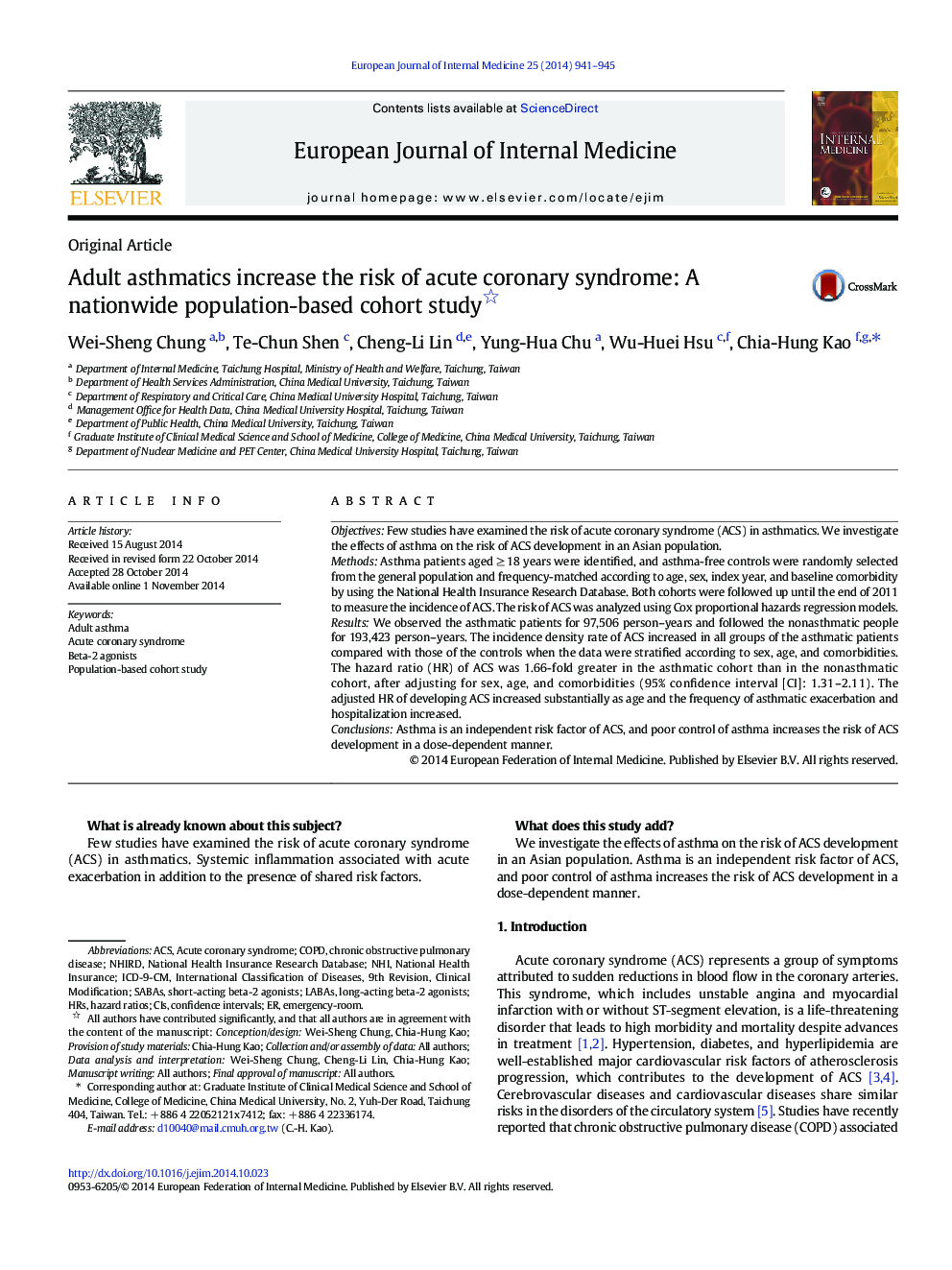| Article ID | Journal | Published Year | Pages | File Type |
|---|---|---|---|---|
| 3466404 | European Journal of Internal Medicine | 2014 | 5 Pages |
•The incidence density rate of ACS increased in all groups of the asthmatic patients.•The hazard ratio (HR) of ACS was 1.66-fold greater in the asthmatic cohort.•ACS increased as age and the frequency of asthmatic exacerbation and hospitalization increased.
ObjectivesFew studies have examined the risk of acute coronary syndrome (ACS) in asthmatics. We investigate the effects of asthma on the risk of ACS development in an Asian population.MethodsAsthma patients aged ≥ 18 years were identified, and asthma-free controls were randomly selected from the general population and frequency-matched according to age, sex, index year, and baseline comorbidity by using the National Health Insurance Research Database. Both cohorts were followed up until the end of 2011 to measure the incidence of ACS. The risk of ACS was analyzed using Cox proportional hazards regression models.ResultsWe observed the asthmatic patients for 97,506 person–years and followed the nonasthmatic people for 193,423 person–years. The incidence density rate of ACS increased in all groups of the asthmatic patients compared with those of the controls when the data were stratified according to sex, age, and comorbidities. The hazard ratio (HR) of ACS was 1.66-fold greater in the asthmatic cohort than in the nonasthmatic cohort, after adjusting for sex, age, and comorbidities (95% confidence interval [CI]: 1.31–2.11). The adjusted HR of developing ACS increased substantially as age and the frequency of asthmatic exacerbation and hospitalization increased.ConclusionsAsthma is an independent risk factor of ACS, and poor control of asthma increases the risk of ACS development in a dose-dependent manner.
